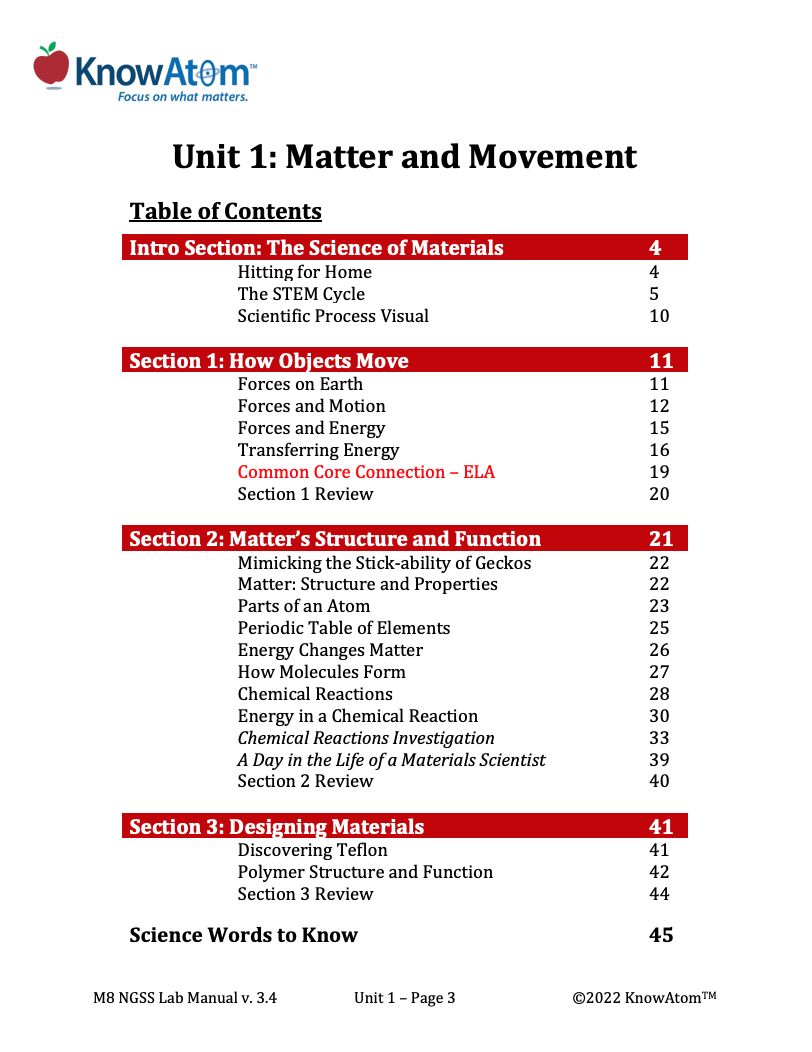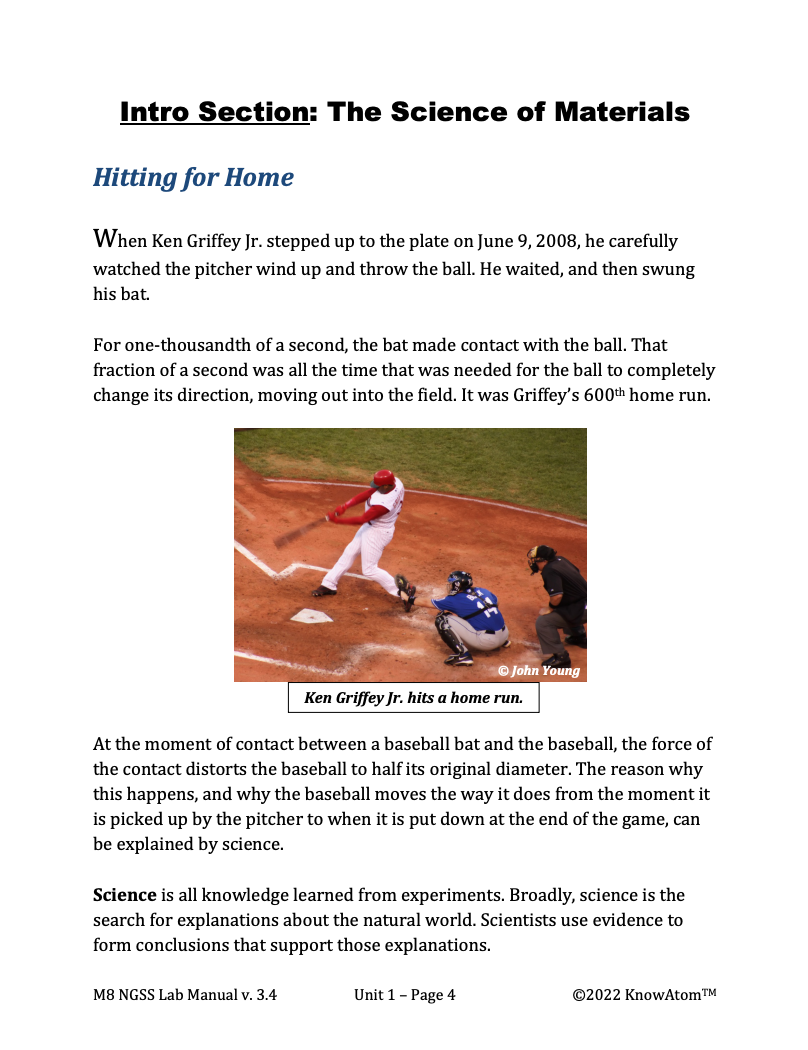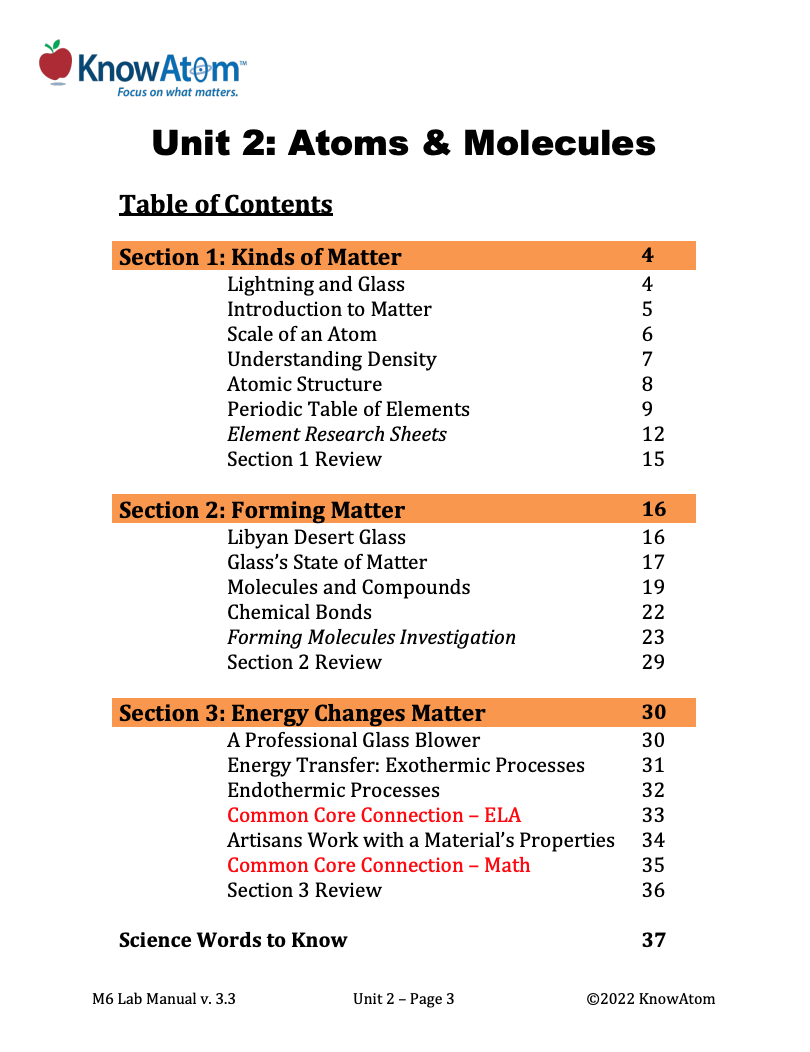.png)
In this unit, students are introduced to science and engineering by exploring several phenomena that relate to cooking. Students begin with an investigation into the structure of matter and how energy determines state of matter. This page is a high level look at key components of this lesson.
.png)
In this unit, students focus on interactions between matter and energy. In this lesson, students figure out the endothermic and exothermic phenomenon of chemical hot and cold packs to analyze matter and energy in different kinds of chemical reactions. This page is a high-level extract of this lesson.
.png)
In this unit, students explore several phenomena that relate to cooking. In this lesson, students evaluate chemical reactions, and use that knowledge to engineer a prototype that transfers energy by chemical processes. This page showcases key components of this lesson.

In this unit, students explore the relationship between matter and energy using the phenomenon of material properties to discover why certain materials are useful for a particular function. For this lesson, they focus on the role of energy in changing matter during a chemical reaction phenomena between two substances. This page is a high-level extract of this lesson.

In this unit, students use the phenomenon of why certain materials (such as the materials that make up a baseball) are useful for a particular function to explore the relationship between matter and energy phenomena. In this lesson students manipulate the properties of a polymer bouncy ball by changing the amounts of reactants in a chemical reaction. This page highlights parts of this lesson.
.png)
In this unit, students focus on the relationship between an organism’s cellular structure and the ability of the organism to access energy to carry out essential life functions. Students begin by examining prokaryotic and eukaryotic cells under the microscope and then compare organelles in plant and animal cells in this lesson. This page is a high-level extract of this lesson.
.png)
In this unit, students focus on the organisms that live on Earth’s surface, analyzing how living things are made of cells, which have certain requirements for survival, including food, water, and energy. In this lesson they explore the phenomena of cellular membranes. This page highlights key parts of this lesson.
.png)
In this unit, students discover how life reproduces at the cellular level, analyzing the science phenomena of how genetic information is stored in chromosomes. In this lesson, students observe mitosis in plants and animals. This page shows key components of this lesson.

In this unit, students explore the science phenomena of interactions between energy and matter, analyzing how matter can only change when enough energy is present. In this lesson, they investigate the structure of molecules, relating this structure to the matter’s properties. This page is a high-level extract of this lesson.
Standards citation: NGSS Lead States. 2013. Next Generation Science Standards: For States, By States. Washington, DC: The National Academies Press. Neither WestEd nor the lead states and partners that developed the Next Generation Science Standards were involved in the production of this product, and do not endorse it.
